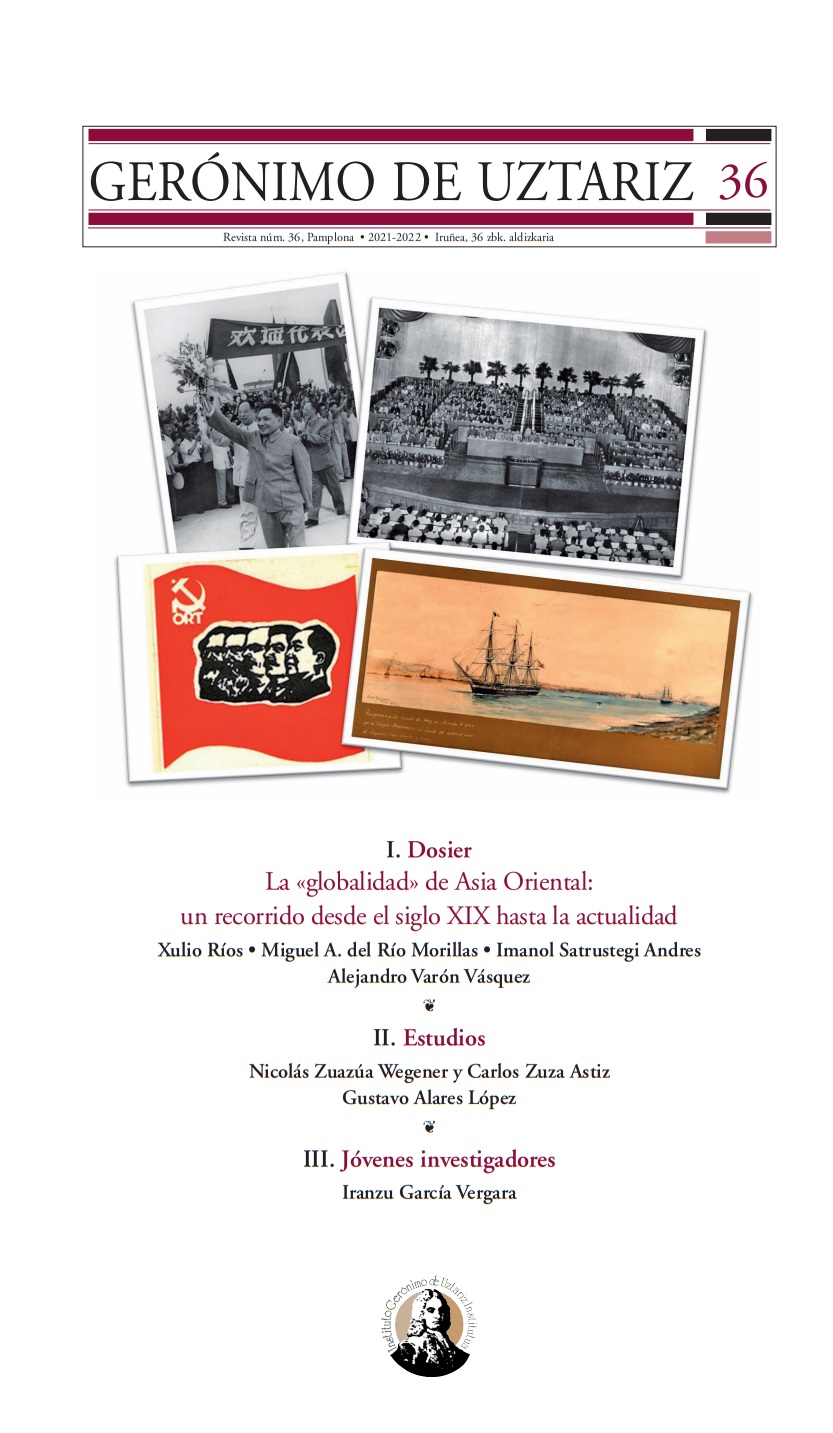Women in Navarrese public sphere Associationism, the labor world and female professional sectors (1931-1933)
Main Article Content
Abstract
The purpose of this work is to illustrate the imprint that the legislative changes of the Reformist Biennium (1931-1933) had on women. These new measures approved by the republican government provoked the mobilization of Navarrese women who left their homes to form part of the public sphere. There was an awareness as a group that led to a proliferation of political, religious and labor associations. This last, fruit of the productive framework that existed in Navarra, specifically in Pamplona. All this accompanied by the Maternity Insurance that supported the woman during pregnancy and childbirth to encourage her not to leave work. This measure showed a gap between the law and the mentality of the Navarrese woman, who did not see the benefit of it and rejected it since most of them stopped working when they married.
In order to carry out a complete analysis of the reality, both hemerographic sources were combined through the press of the time: Diario de Navarra, El Pensamiento Navarro and La Voz de Navarra, as well as primary sources in the General Archive of Navarra and the Municipal Archive. from Pamplona. The confluence of these sources allows us to approach the reality of women and their participation in the Navarrese public sphere.
The following lines show how religiosity and the strength of the right wings gave rise to a Catholic feminism that led to the creation of political or religious associations whose purpose was for women to take an active part in the public defense of these values. Although the woman did not detach herself from her traditional role, she began to participate in different areas in the public sphere. A jump that had a great social influence as evidenced by the press.
Article Details

This work is licensed under a Creative Commons Attribution-NonCommercial-ShareAlike 4.0 International License.
References
Branciforte, L. (2015): «Experiencias plurales del feminismo en el primer tercio del siglo pasado: un balance de la historiografía reciente», Revista de Historiografía (Instituto de Historiografía Julio Caro Baroja) (22): 235-253. www.uc3m.es/revhisto.
Bravo Sueskun, C. (2012): De la domesticidad a la emancipación. Mujeres en la sociedad navarra (1961-1991). Pamplona: Gobierno de Navarra.
Chueca, J. (1999): El nacionalismo vasco en Navarra: 1931-1936. Bilbao: Universidad del País Vasco: Servicio Editorial.
Echeverría Zabalza, J. (1994): «Antecedentes de la Navarra Actual. Algunos elementos sobre
la estructura social de Navarra de los dos primeros tercios del siglo XX», Gerónimo de Uztariz
(9-10), pp. 31-54.
Erdozáin Azpilicueta, P.(2019): «Cuidadoras y Sanitarias», De Mujeres y Documentos, 11.
Ferrer Muñoz, M. (1992. Elecciones y Partidos Políticos en Navarra duranet la Segunda República.
Pamplona: Lente, S.A.
Galán Quintanilla, M. A. (1980): La mujer a través de la información en la II República española. Madrid: Universidad Complutense.
García-Sanz Marcotegui, Á. (2009): El voto femenino y las elecciones municipales de 1933 en Navarra. Pamplona: Universidad Pública de Navarra.
Guibert Navaz, M. E. (1983): Historia de la Escuela Normal de Navarra (1831-1931).
Pamplona: Institución Príncipe de Viana.
Lana Berasain, J. M. (2002): «Jornales, salarios, ingresos. Aproximación a los salarios reales en la navarra rural 1785-1945», en El nivel de vida en la España rural siglos XVIII-XX, de José Miguel Martínez Carrión, 183-234. Pamplona: Universidad de Alicante.
Llona González, M. (1998): «El feminismo católico en los años veinte y sus antecedentes ideológicos», Vasconia, 25, pp. 283-299.
Merino Hernández, R. M.(2016): La Segunda República, una coyuntura para las mujeres españolas: Cambios y permanencias en las relaciones de género. Salamanca: Universidad de Salamanca. Tesis doctoral.
Moreno Seco, M. (2001): «Mujeres y religiosidad en la España contemporánea», en Caporale Bizzini, S. y Montesinos Sánchez, N. (eds.): Reflexiones en torno al género. La mujer como sujeto de discurso. Alicante: CEM-Universidad de Alicante.
Nash, M. (2006): Rojas: las mujeres republicanas en la guerra civil, Taurus.
Ortega López, T. M. (2008): «Conservadurismo, catolicismo y antifeminismo: la mujer en los discursos del autoritarismo y el fascismo (1914-1936)», Ayer, n.º 71, pp. 53- 83.
Piérola Navarte, Gemma (2018): Mujer e ideología en la dictadura Franquista. Navarra (1939-1960). Arre: Pamiela.
Salomón, P. (2000): «Mujeres, religión y anticlericalismo en la España contemporánea: ¿para cuándo una historia desde la perspectiva de género?», en álVArez, A. y otros (coords.): El siglo XX: balances y perspectivas. Valencia: Universitat de Valencia, Fundación Cañada Blanch.
Vázquez Ramil, Raquel (2014): La mujer en la Segunda República. Madrid: Akal.

